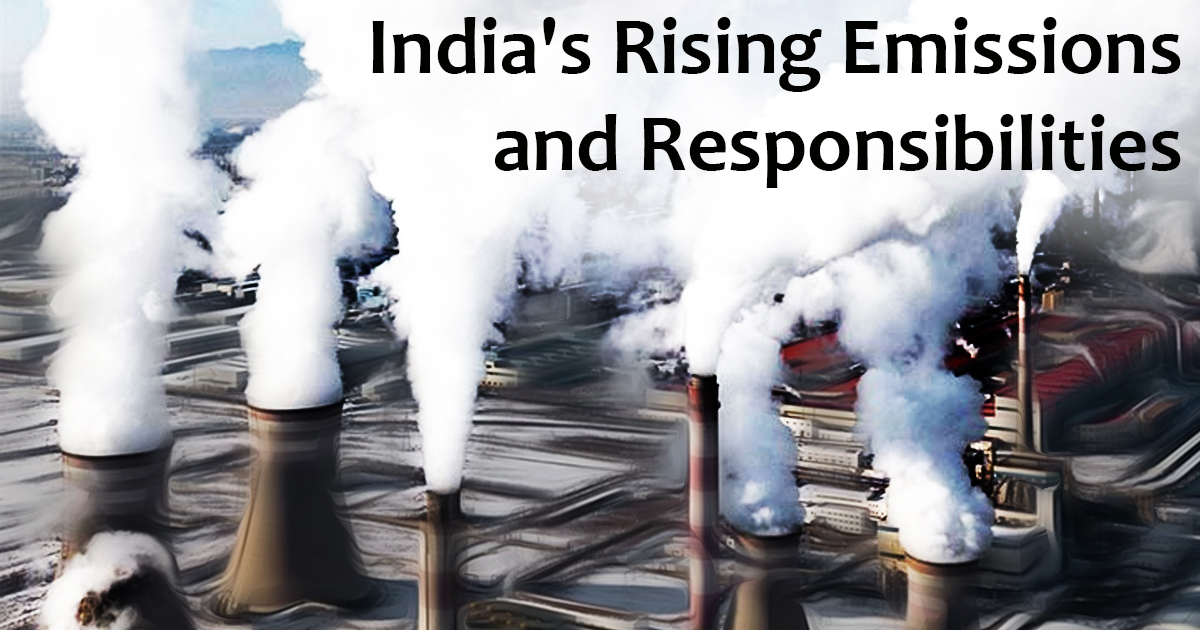
Context (TP): India must take responsibility for its growing emissions, despite having lower per capita emissions compared to Western nations.
India’s Emission Statistics
- Global Position: India is the third-largest emitter of greenhouse gases (GHGs), contributing 7% of the global total (Global Carbon Project).
- Per Capita Emissions: India’s per capita emissions are lower than those of many developed countries (Global Carbon Project).
- Source of Emissions: 73% of India’s total GHG emissions come from coal-based electricity generation (Ministry of Environment, Forest and Climate Change).
Need for India to Take More Emissions Responsibility
- Economic Growth: Increased energy consumption and emissions necessitate sustainable practices.
- Global Leadership Aspiration: India is expected to play a significant role in international efforts, including climate action.
- Large Population: Contributes to its emissions footprint and presents challenges in energy access and consumption patterns.
- Air Pollution Crisis: Impacts millions with respiratory diseases, requiring emissions reductions from sectors like transportation and industry.
- Potential for Renewable Energy: Solar and wind power offer opportunities for emissions reduction and economic growth.
Complexity in Developing Countries
- Historical Emissions: India has low per capita emissions despite rapid industrialisation, while Brazil has higher cumulative emissions due to its historical industrialisation path.
- Per Capita Emissions: China, the world’s largest emitter, has relatively low per capita emissions due to its large population and current industrial phase. South Africa has high per capita emissions due to its small population and carbon-intensive economy.
- Economic Development Stage: Bangladesh prioritises poverty alleviation over emissions reduction, relying heavily on agriculture. Brazil, with a larger economy and diverse industries, invests in clean energy and sustainable development.
- Vulnerability to Climate Change: Small Island Developing States (SIDS) face high vulnerability despite minimal emissions, while Landlocked Developing Countries (LLDCs) are vulnerable to climate-induced disasters affecting development.
- Access to Technology and Finance: India advances in renewable energy but struggles with affordable clean technology access and international finance. Costa Rica successfully transitions to a low-carbon economy with international support.
- Governance and Institutions: Corruption and weak governance hinder Indonesia’s renewable resources, impacting climate policy effectiveness. Chile leads in renewable energy with strong environmental regulations and political stability.
International Best Practices
- Germany’s Energiewende: India can adopt Germany’s transition to renewable energy, which provides valuable lessons on policy design, grid integration, and public acceptance.
- Denmark’s Wind Energy: Denmark’s success in wind energy can be replicated in India’s coastal and windy regions.
- Norway’s EV Adoption: Norway’s policies to promote electric vehicles, including tax incentives and infrastructure development, can be adapted to India’s context.
- London’s Congestion Charge: Implementing a congestion charge can reduce traffic and emissions in Indian cities.
- British Columbia’s Carbon Tax: This model can be adapted to incentivise emissions reduction in India.
- Japan’s Industrial Efficiency: Japan’s focus on energy efficiency in industries can be applied to India’s manufacturing sector.




